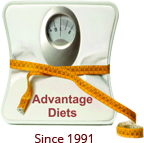The Big Fat Surprise
As much as my education and training wanted to deny anything Nina Teicholz said in her book, The Big Fat Surprise, I couldn’t.
For some time now I’ve questioned the low-fat diet approach because the only option left for someone once fat has been eliminated is to increase carbohydrate intake. (A low-fat diet can’t mean a high-protein diet since natural sources of protein carry fat with them.) The more carbohydrates you eat, the more you call on your body’s insulin to absorb, metabolize, and store away any excess calories. All that insulin being around means the body looks to the carbohydrate calories for energy not to the excess fat stores. Guess what? Youre not going to lose weight if you can’t get the fat stores to give up their bootie.
I’m also against eliminating fat because you’ve taken away the major flavor component in food. Food manufacturers realized that when they started producing low-fat foods. In place of fat, sugar is added for flavor. That just helps increase the amount of carbohydrates people are eating. And it’s not complex carbs we’re talking about here. It’s simple carbs like sugar and white flour.
But it’s not just that. We gave up lard, suet, and butter figuring that with their being so highly saturated, they had to be the reason for our diseases (heart, obesity, hypertension, diabetes). For the longest time, there has existed a diet-heart disease paradigm pushed by the biologist and pathologist, Ancel Keys, starting back in the ’50s. He decided that measuring total blood cholesterol would be the smoking gun that pointed to the existence of heart disease. And that if you had high cholesterol, what better way to decrease it but by decreasing your intake of cholesterol and fat?
In recent years, researchers have found that the body, being the miraculous machine it is, will step-down the production of cholesterol when there is more than sufficient cholesterol being eaten. And, in turn, when there’s not enough cholesterol in the diet, the body will increase the production of the substance. So, the alarm that had been sounded on the eating of eggs slowly was quieted. Now eggs are considered a healthy choice of protein. Have one every day, if you want. So, maybe it can also be said of saturated fat that the body knows what to do with it, considering that when lard, suet and butter were the main fats, the rate of heart disease wasn’t even close to what we have today. (I do appreciate that when those fats were in fashion people didn’t live as long. But that wasn’t necessarily due to the fat they were eating but the environment in which they were living.)
Then again, people want to point to our living a more stressful and hectic life today than was true of our ancestors. Stress is what you make of it. You don’t think it was stressful trying to kill an animal to feed your family or plant your crops and have a successful year? The stressors today may be different but they may be no more potent than that experienced hundreds of years ago.
One interesting point Teicholz brought out was that by setting levels of total cholesterol and LDL-cholesterol as the benchmarks for heart disease without testing for particle size, LDL levels could be leading doctors to diagnose patients as having heart disease when it isn’t a problem. Having a greater than average number of LDL particles may not be so bad if those particles are large and fluffy. It’s when they’re small and dense that they tend to invade arteries. Why aren’t more doctors requesting labs be done on particle size then? In addition, saturated fat increases HDL-cholesterol, the good cholesterol. So why cut down on the amount of saturated fat eaten when it encourages the production of the good cholesterol? Of course, it may become like a dog chasing his tail where the saturated fat creates more LDL but provides more HDL to get rid of the LDL. There is probably a fine balance point somewhere in this scenario.
To get a full picture of the opposite camp of thinking from that of the USDA and NIH, this book is worth a read. Then you make the decision. When all is said and done, we each have to be responsible for our own bodies. I’m not saying that I agree with everything Teicholz has said, but I still believe her points should be heard and debated by the scientific community.
Once you’ve read the book, please come back and share your opinions here.


